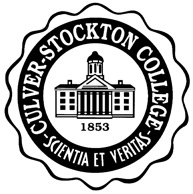Below is a summary of the abstract you submitted. Presenting author(s) is shown in bold.
If any changes need to be made, you can modify the abstract or change the authors.
You can also download a .docx version of this abstract.
If there are any problems, please email Dan at dar78@pitt.edu and he'll take care of them!
This abstract was last modified on April 21, 2019 at 10:08 p.m..

In this experiment we sought to isolate and characterize a novel bacteriophage from an environmental sample. A soil sample was collected from the Northeast Missouri region and putative phages amplified using M. smegmatis mc2155 as a bacterial host. The sample was subjected to several rounds of purification with the aim of isolating a novel bacteriophage. The presence of bacteriophage was inferred by the formation of clearings, or plaques, on bacterial lawns that had been infected with samples containing the putative phage. Three new phages were discovered by the current cohort: JoeDirt26, SchmutzDaCat, and Pass. Genomic analysis was conducted on bacteriophage Avadakedavra isolated by the 2015 cohort. The Avadakedavra genome was 73721 base pairs long, with cluster L assignment and subcluster L1. Minor tail protein, membrane domain protein, and capsid maturation protease were among the known products encoded by the 121 features identified in a preliminary analysis of the Avadakedavra genome, while 65 were found to have no known function. Also encoded in the Avadakedavra genome is a single tRNA, tRNA-Cys(TGC). The programs used for annotation include DNA Master, Phamerator, Starterator, HHpred, NCBI BLAST and PECAAN.

